

Book Cover: Pictures from Here by Sunil Gupta, 2003
Images courtesy the artist and Hales Gallery, Stephen Bulger Gallery and Vadehra Art Gallery. © Sunil Gupta. All Rights Reserved, DACS 2021.
The cover of Sunil Gupta‘s new book, Pictures from Here, defines the kind of work contained within. An old family portrait of his mother, eyes obscured by a pink rectangle, it instantly summarises the strategies and concerns this photographer has refined over many years and has presented in this book, which is essentially a retrospective. As a gay photographer and an artist for whom the personal has always been political, this image signposts the book’s content. The blindfolded eyes seem a wry comment on personal and private histories as also on the problems encountered in the process of visually representing conflicted identities.
The book is structured as an album recording a migratory life lived in different continents and cultures, with a series of specific projects providing the linear strain. Short passages of text precede each collection of works, refreshingly self-conscious about the strategies and ideas the artist was grappling with, at the time the works were assembled. This has worked to a great advantage in the book, for Gupta’s photography took a personal turn very early in his practice and the exploration of the politics of personal has played out in increasingly sophisticated ways as his work has matured. As a record of a creative journey, this book will find a unique place in discussions of contemporary South Asian art and photography.
Gupta, born in 1953, was brought up in an upper middle class family in Delhi which migrated to Canada in the late ’60s. Moving to New York in the ’70s to do an MBA, he drifted off to study photography with Philippe Halsman, George Tice and the legendary Lisette Model at the New School. Exposed, in a sense, to classical modes of picture making – the social documentary, for instance Gupta fortuitously had teachers in New York who also opened the door to expressive freedom. New York was also in its hedonistic pre-AIDS gay prime those days and we find him writing about the excitement of exploring his sexual identity at that time. Art school in London (RCA) turned out to be a huge contrast and he obviously hated it. The racial politics of Britain was something new too and Gupta added another conflicted identity – “black” – to such minority labels as South Asian, gay and exile.
His first foray into “liberal photojournalism” was in India in 1980, with Aruna and Bunker Roy at their Tilonia project in Rajasthan. Their politics obviously informed Gupta’s practice. This first part of the book confronts the issue of the Orientalist stereotype present in the work of certain NGOs. How pictures of exotically colourful villagers can convey issues of deprivation, caste conflict, feudal and gender repression – or how they cannot led him to the exploration of several alternative options.
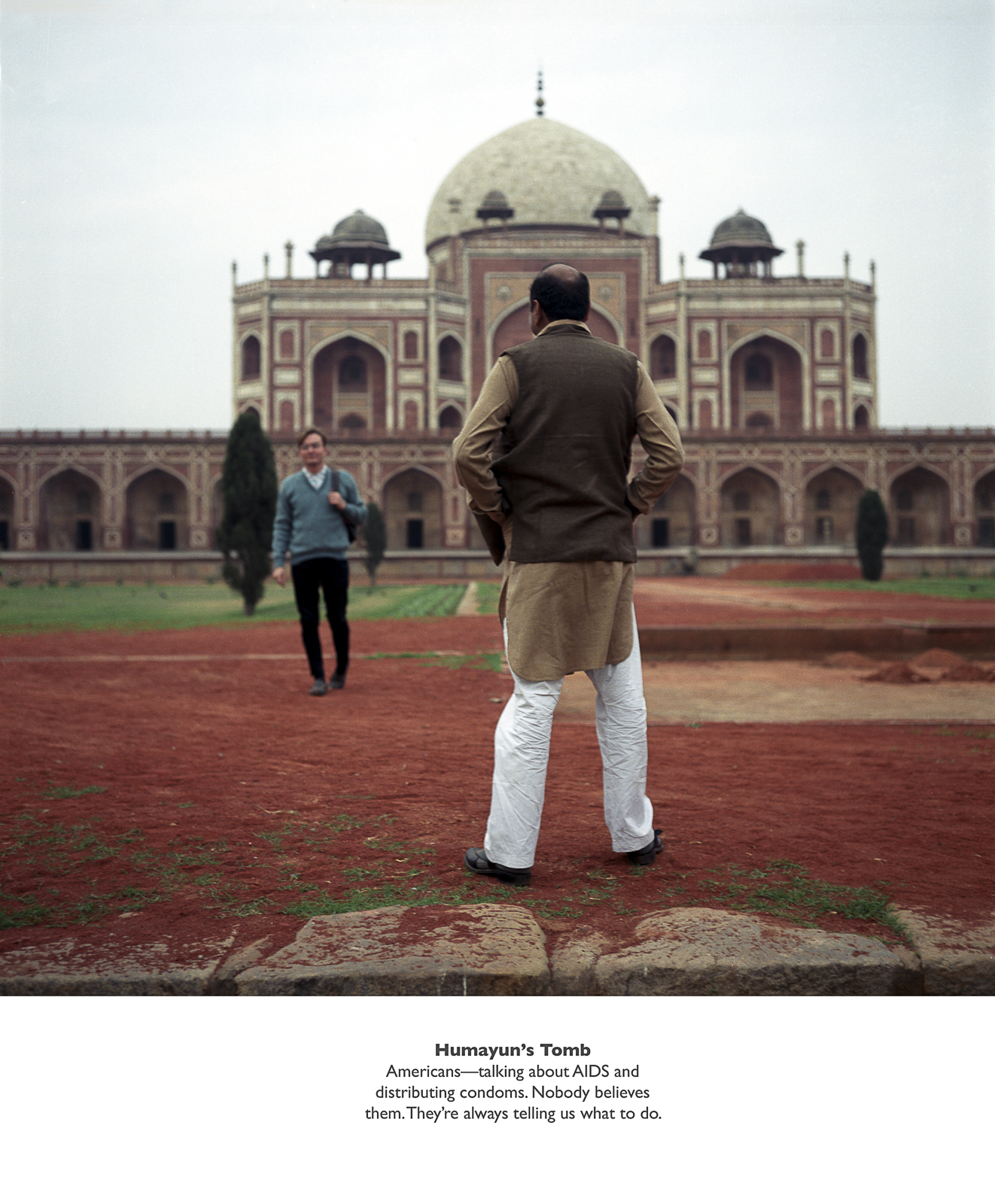
From the series, Exiles, 1987.
Images courtesy the artist and Hales Gallery, Stephen Bulger Gallery and Vadehra Art Gallery. © Sunil Gupta. All Rights Reserved, DACS 2021.
In the mid-’80s, Ten Years On took the form of black and white portraits of gay couples in London, as a means of trying to come to terms with the end of his own long relationship. Presented here, these images are now snapshots of a historical moment in time. What they may reveal of the inner lives of their subjects is however open to question. But Gupta’s presentation of this project as he struggled to place his art within a more personal context, signalled towards all the work that was to follow.
Social Security, 1988, uses the formal strategy of the family photo album with an accompanying text – letters from his mother about the family and its relationships. A mix of b/w and colour, with family album photographs interspersed with snapshot-style pictures, this is a very moving narrative of lost hopes and lives dispersed in a melancholic set of random, uncontrollable miscues. Ending with the death of his father, his body lying unclaimed for three days in a city morgue in Montreal, this was the first example of what has been the strongest work statement by Gupta, dealing very directly with the personal, the familial and ultimately the corporeal as site and subject of desire, dissipation, heartbreak, disease and, finally, release. This is where Gupta charted an aesthetic terrain which has become increasingly sure as he let his visual instinct take over with more confidence, reining in the didactic.
Issue-based projects – Reflections of the Black Experience, documenting people of colour in London; Exiles, on gay men in Delhi; Pretended Family Relationships, on gay relationships in London – are those in which Gupta is working out his politics through his photography, increasingly combining image with text. Exiles uses urban locations like Delhi’s tombs, gardens and areas like Connaught Place as sites of furtive male encounters, the place and site becoming a central issue in the work.
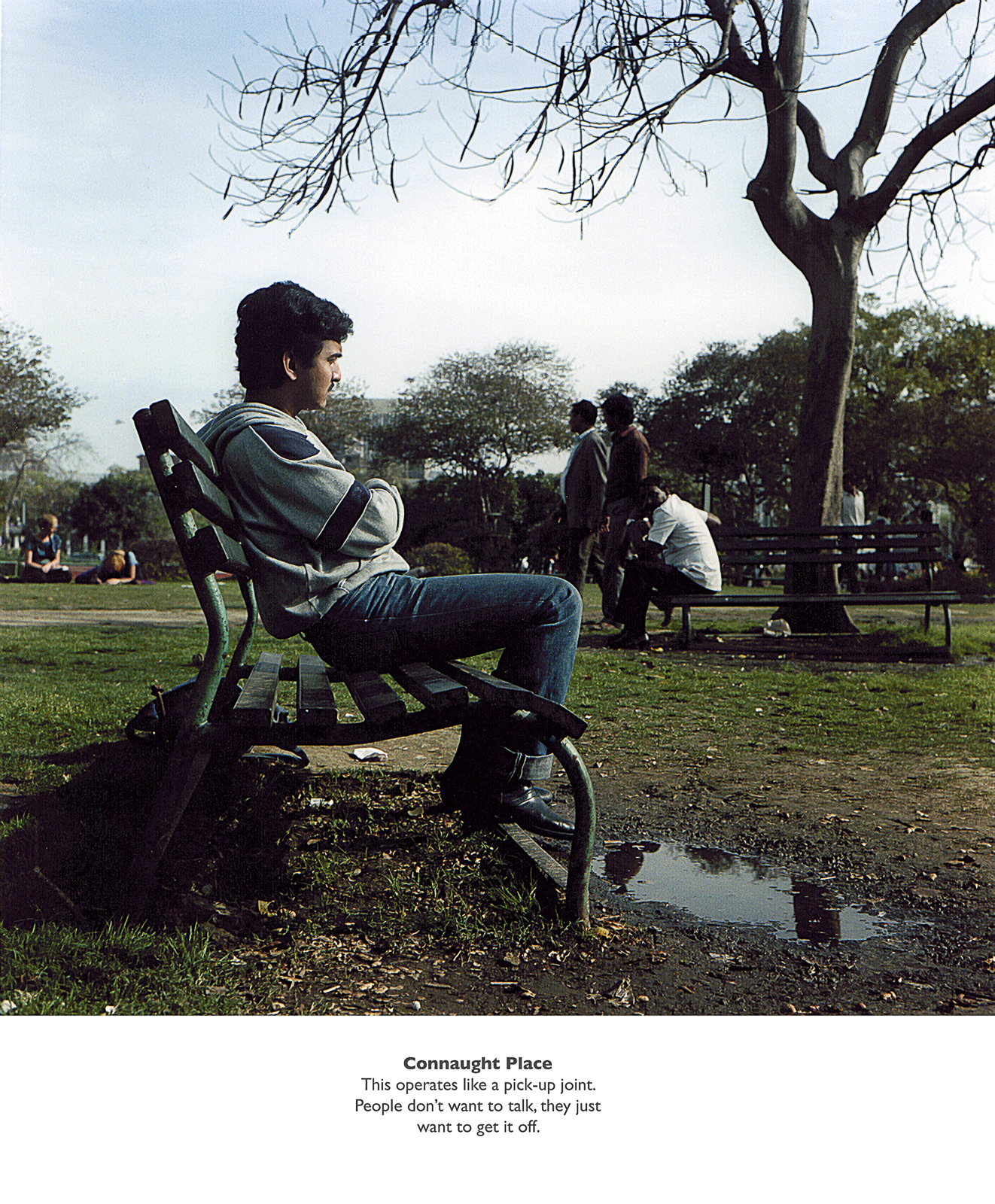
From the series, Exiles, 1987.
Images courtesy the artist and Hales Gallery, Stephen Bulger Gallery and Vadehra Art Gallery. © Sunil Gupta. All Rights Reserved, DACS 2021.
It is with his series Trespass that Gupta’s work enters its mature phase. Combining images, newspaper clippings and picture-scans with text pieces, the politics of identity is explored with light irony and a much freer formal visual vocabulary. His body – shy, naked, exposed – enters the frame, Madhur Jaffrey on her cookbook cover and Chandra Sekhar Azad with his gun preside over the breakup of a tragic three-way love affair in the kitchen. These works showcase his wry humour and startlingly raw emotional revelations.

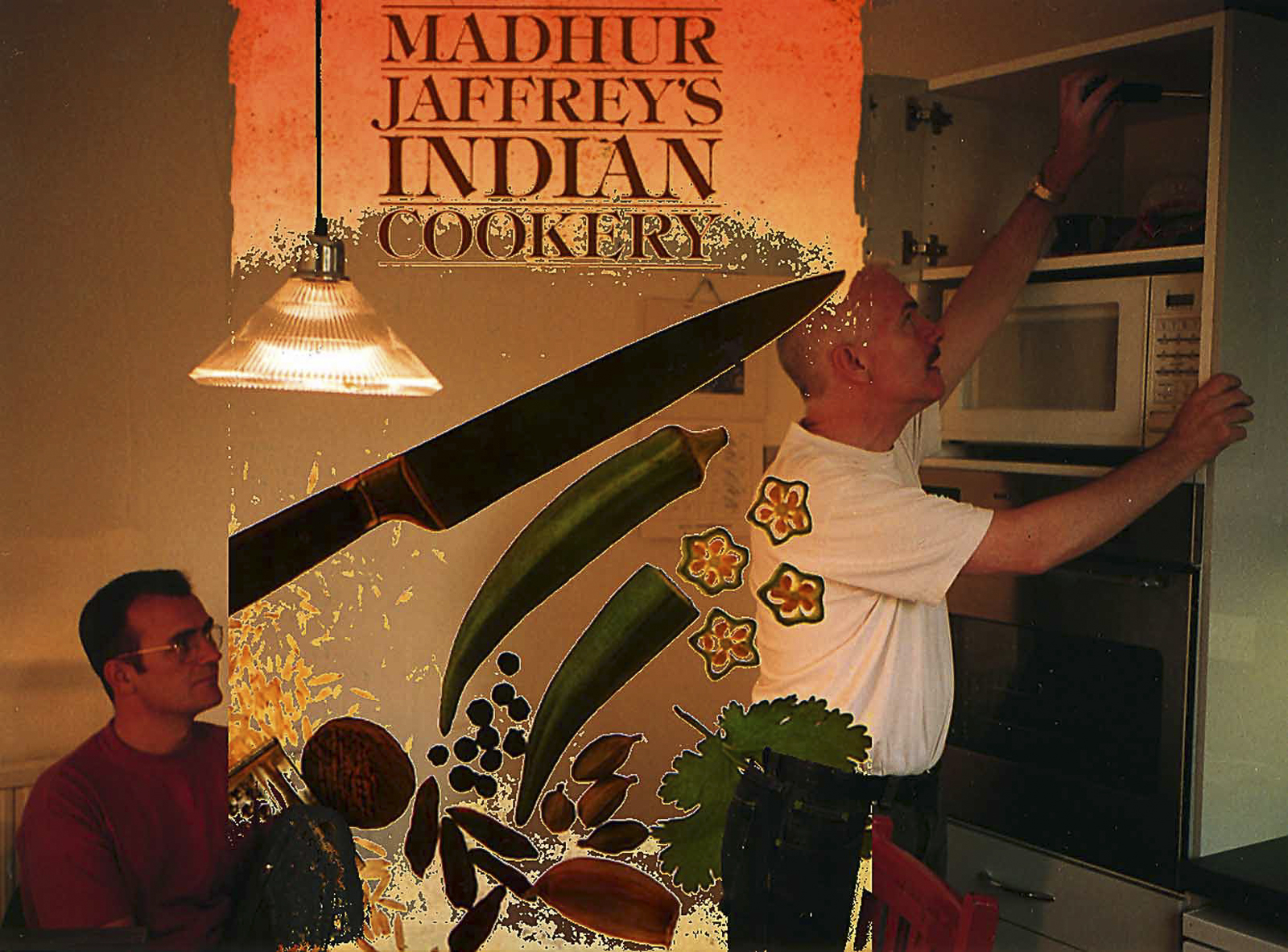
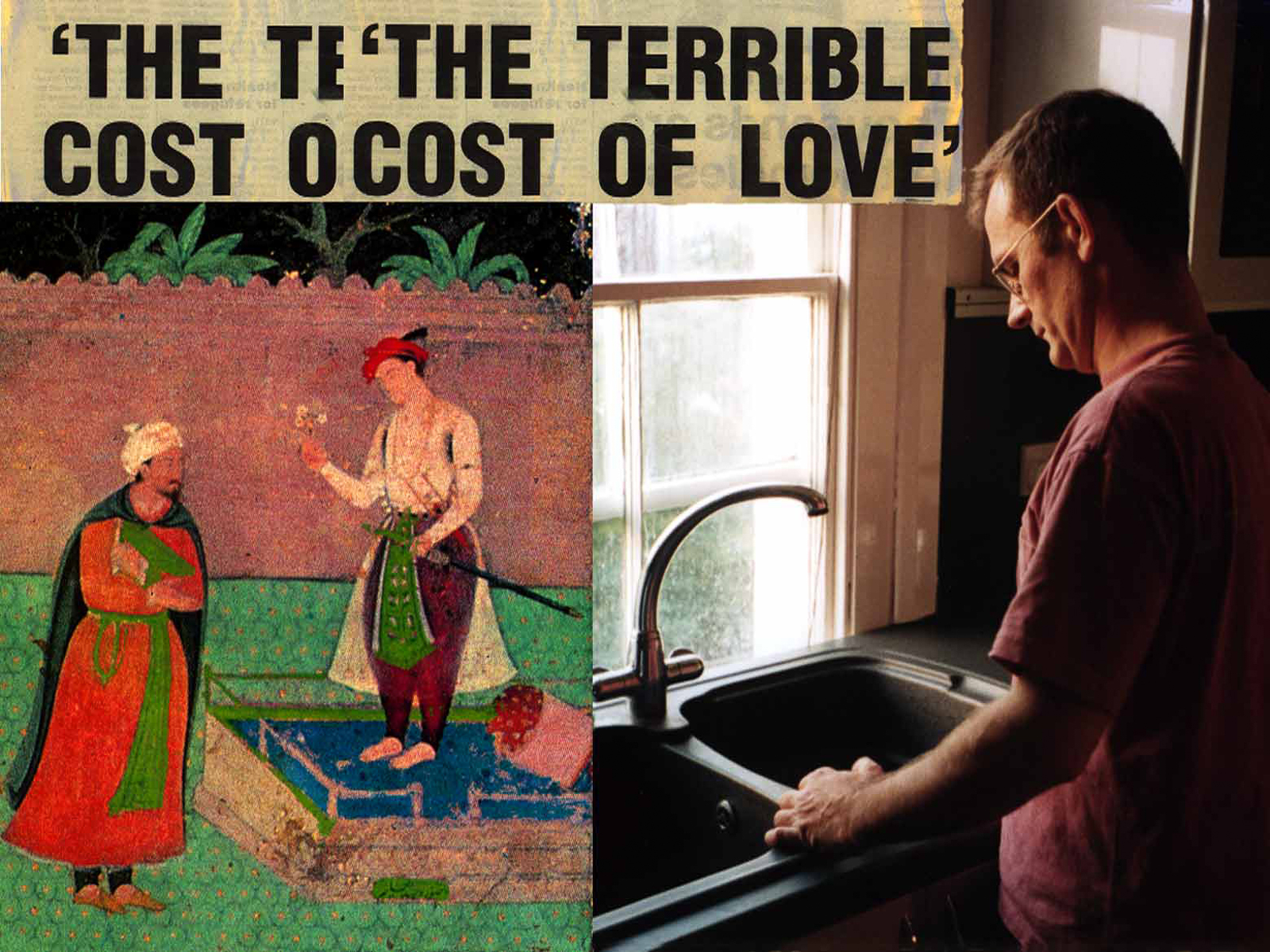
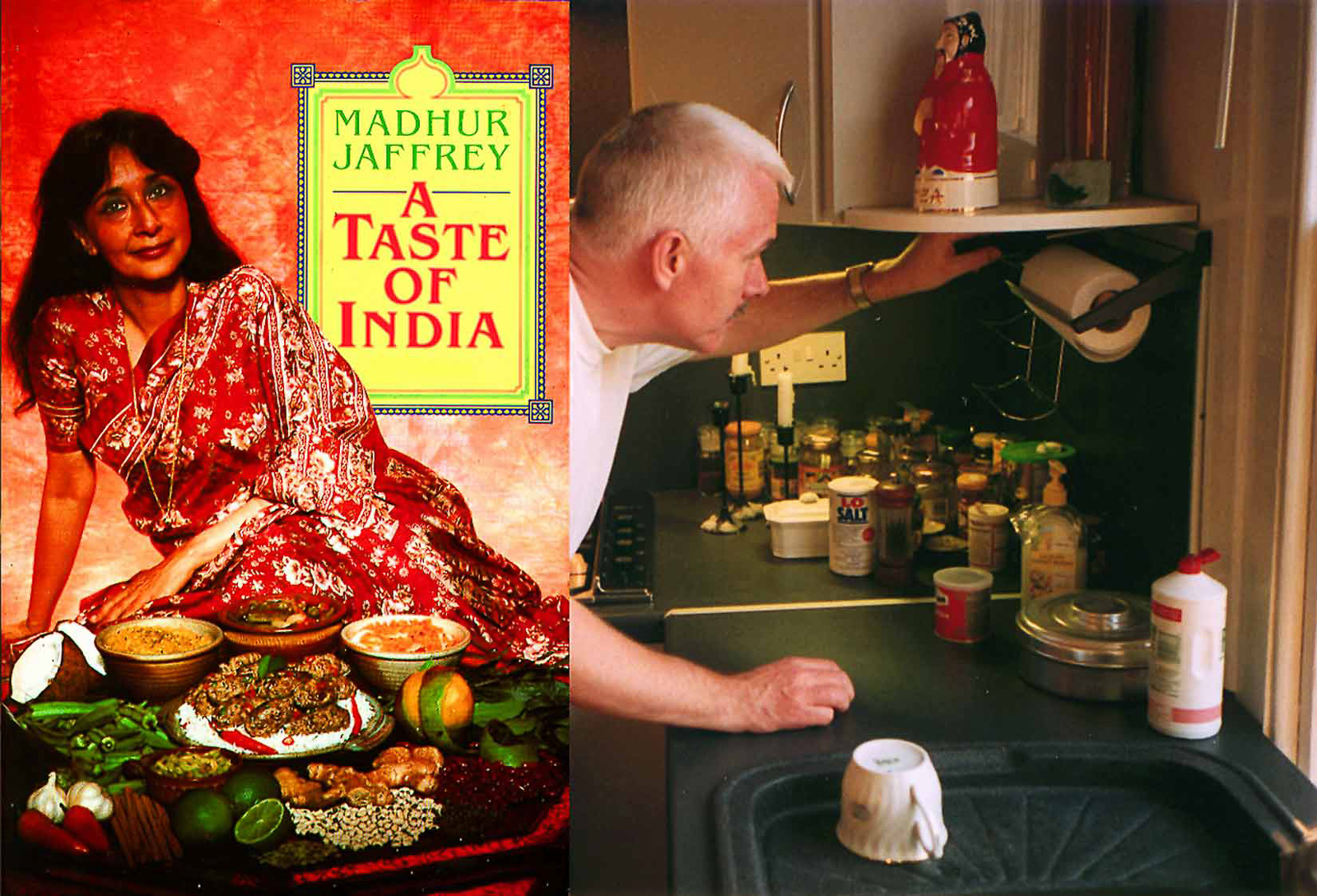
From the series Trespass 2, 1994.
Images courtesy the artist and Hales Gallery, Stephen Bulger Gallery and Vadehra Art Gallery. © Sunil Gupta. All Rights Reserved, DACS 2021.
On discovering he was HIV positive in 1995, Gupta had another issue to confront. He takes it on with the directness with which he handled earlier issues, but his visual armoury is much stronger. From Here to Eternity, a set of six diptychs of paired images, is his most powerful work produced yet. Self-portraits are paired with the shut exteriors of gay clubs in South London, body and site coming together finally – Is the body, this most vulnerable site of desire, rejecting the experience of exile? Or is the artist shutting out finally the desire of the flesh?
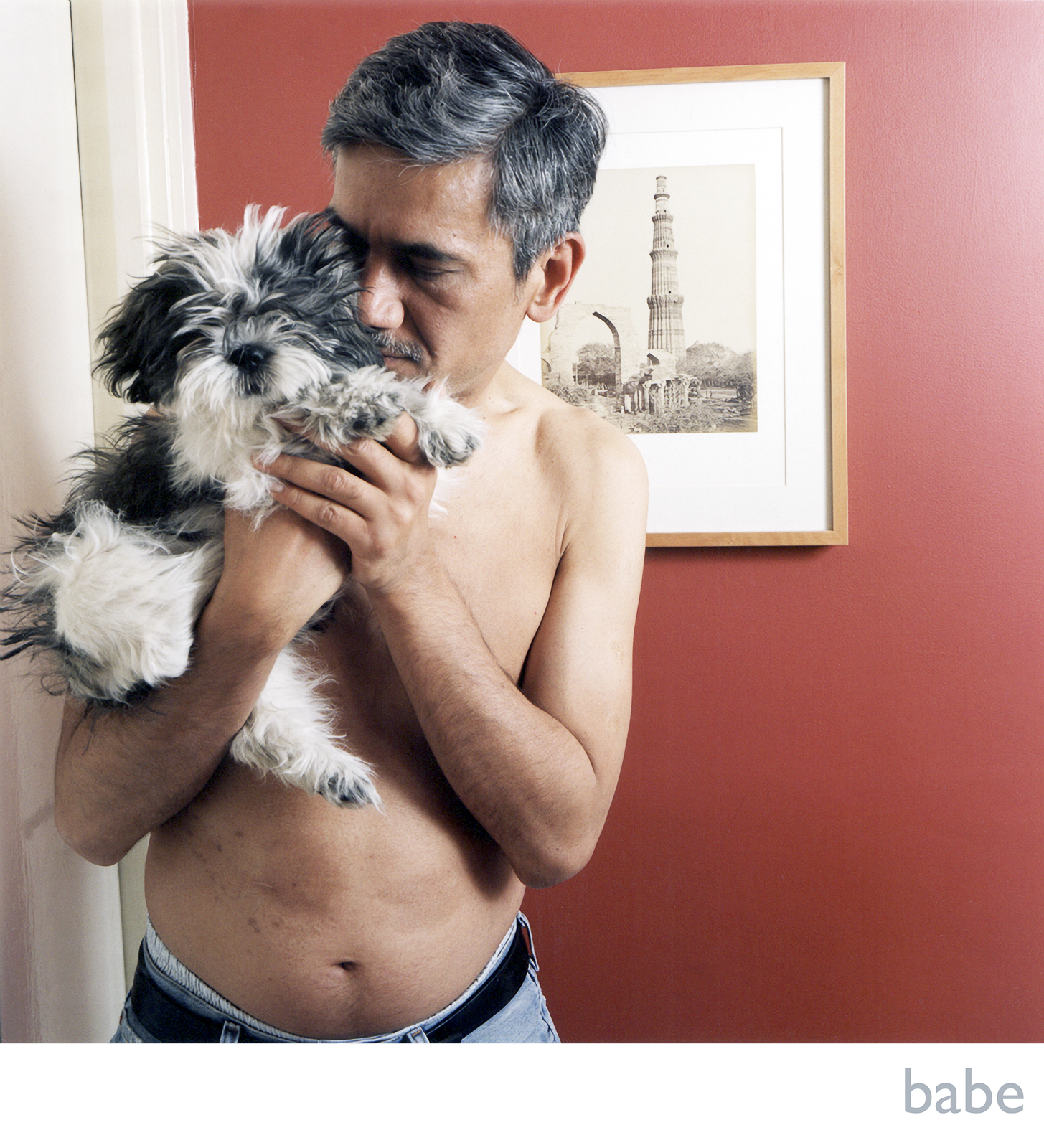
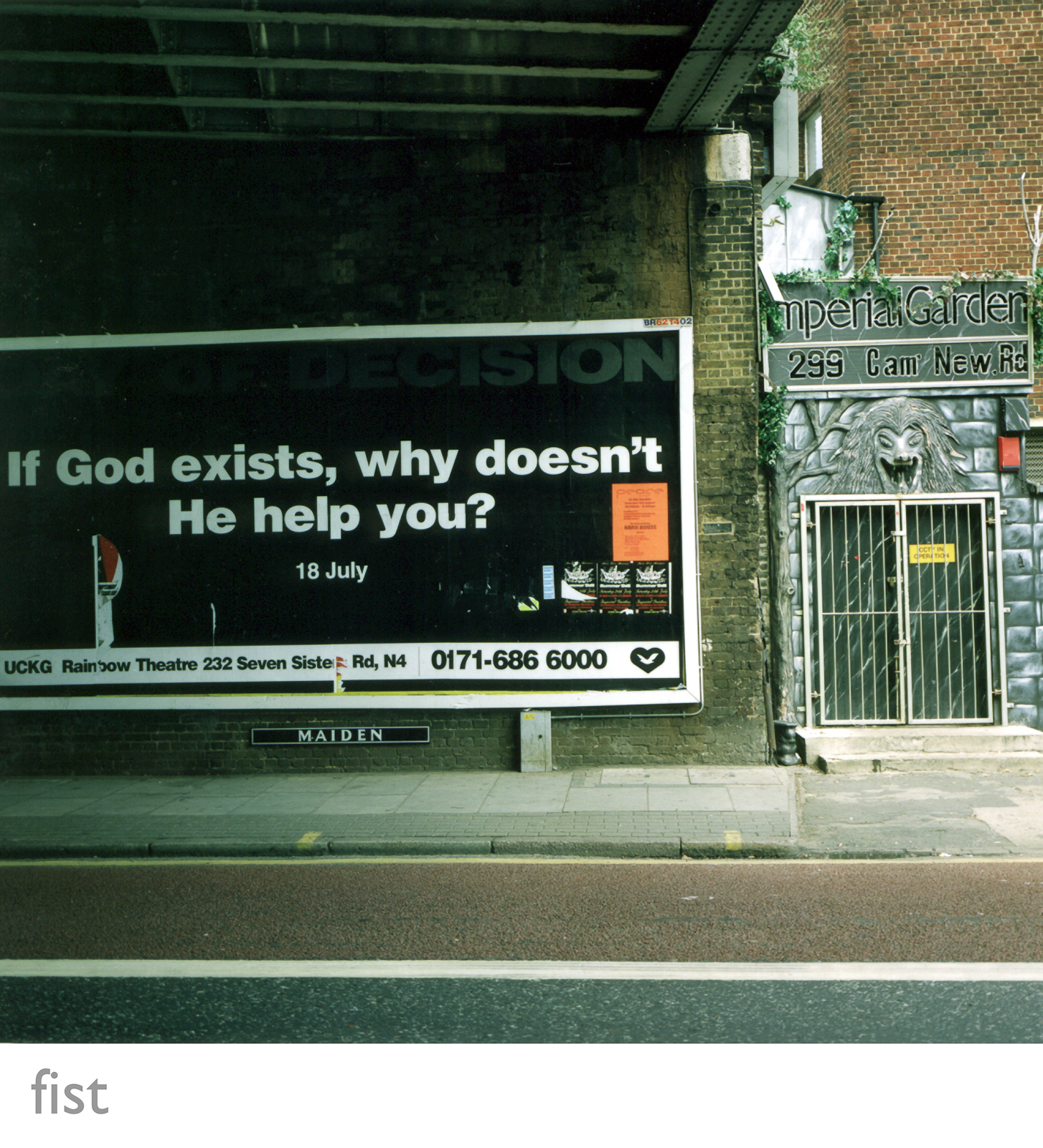
From the series, From Here to Eternity, 1999.
Images courtesy the artist and Hales Gallery, Stephen Bulger Gallery and Vadehra Art Gallery. © Sunil Gupta. All Rights Reserved, DACS 2021.
Intimations of mortality have inspired many Indian artists in recent years. One thinks of the last works of Rummana Hussain, confronting her imminent demise with increasingly powerful works as the disease assaulting the body and the medical intervention fighting the assault become the subject of her work. Bhupen Khakhar’s shocking paintings of the face and body, skinless, with guts exposed, made after he was diagnosed with cancer took on an altogether different resonance, as they were exhibited during the butchery in Gujarat last year. And Arpita Singh’s recent watercolours suddenly fill with exposed guts and innards, a response to her own recent surgery. From Here to Eternity is a similar suite of photographs.
Gupta writes about the latest series, Homelands to be shown soon in India: “These are elegiac diptychs which return to all landscapes of exile, the ancestral village in UP, Delhi’s Nizamuddin, mother’s home in Canada, New York and London.” In Constitution House, New Delhi / Downtown Montreal we are left with the baby Sunil (in a frock?) facing his mother’s feet in Montreal, a bright red maple leaf on the sidewalk proudly framing its existence before the coming freeze of winter. The artist’s journey (that we have followed in the book) has now taken him back home: a place from where he can simultaneously look back at his own histories and look forward critically into the future.
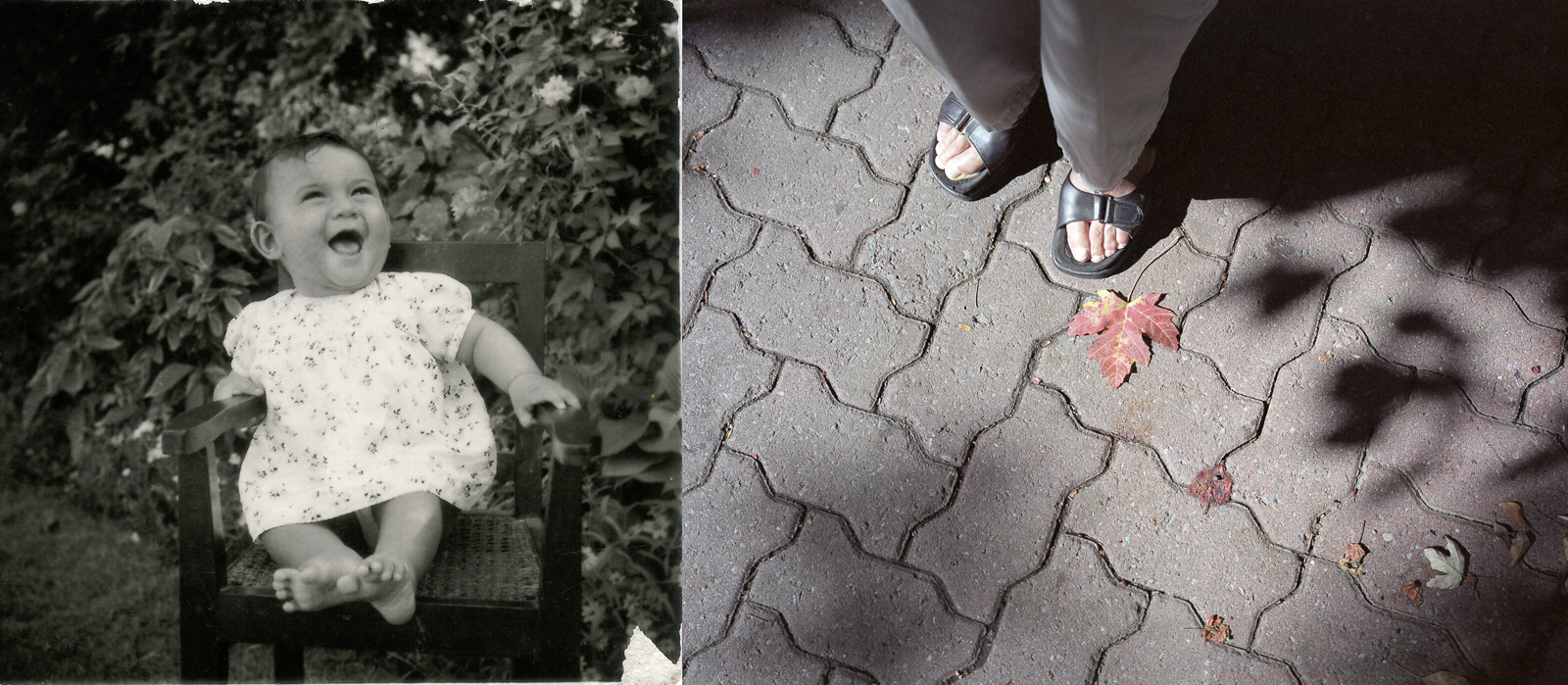
From the series, Homelands, 2004.
Images courtesy the artist and Hales Gallery, Stephen Bulger Gallery and Vadehra Art Gallery. © Sunil Gupta. All Rights Reserved, DACS 2021.
———–
Curatorial and publishing projects have been a crucial part of Sunil Gupta’s practice as an artist. He has found it important to project fellow artists’ works within specific politically crucial spaces, Co-founder of Autograph, the Black Photographers Cooperative in London, and OVA, Gupta has made an attempt to place contemporary art practice from “other non-European, non-White” regions within the mainstream in the UK and Canada.
Apart from his own work, he has edited Disrupted Borders, Rivers Oram Press, 1993. An Economy of Signs, Rivers Oram Press, 1990 – a pioneering book on new photography from India, and Ecstatic Antibodies: Resisting the AIDS Mythology (edited with Tessa Boffin) Rivers Oram Press, 1990.
This essay was first published in The Art News Magazine of India. Vol VIII. Issue IV, 2003.
Copyright © Ram Rahman
Ram Rahman has exhibited his photographs in individual and group shows in India and around the world. Locations of his most recent shows include The Pompidou Centre, Paris (2017), Houston Fotofest (2018), Gwangju Biennale (2018), and the Chennai Photo Biennale (2019).
The last few years, Ram has lectured on aspects of contemporary Indian photography and architecture at The Bhau Daji Lad Museum, Mumbai; Jnanapravah, Mumbai; MoMA, New York; The Pompidou Centre, Paris; including major lectures on Sunil Janah, Raghubir Singh, and the modern architecture of New Delhi.
Ram's photographs are in the collections of the Museum of Modern Art, New York; The Pompidou Centre, Paris; The Metropolitan Museum, New York; and The Devi Art Foundation, Delhi.
Visit Ram Rahman's Website.
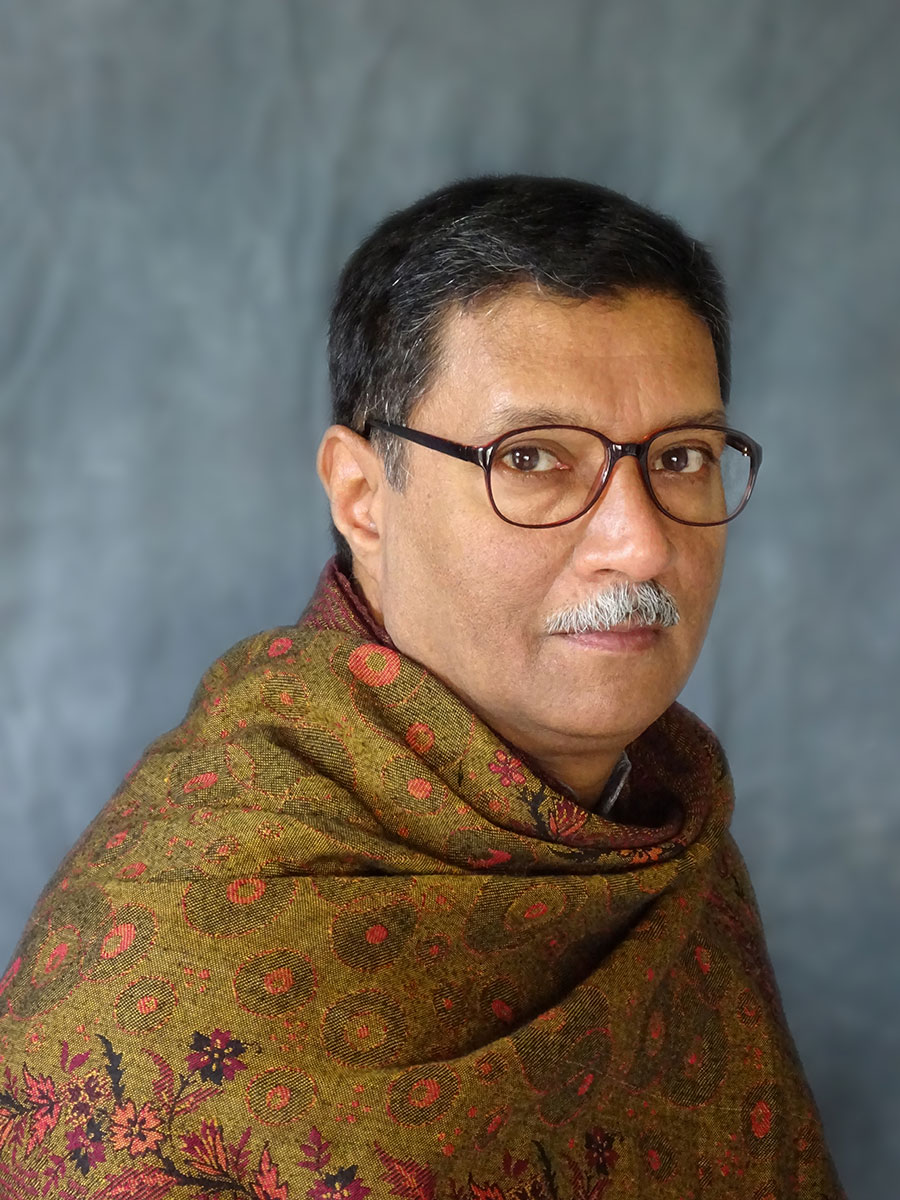 Copyright © Ram Rahman
Copyright © Ram Rahman
20 November